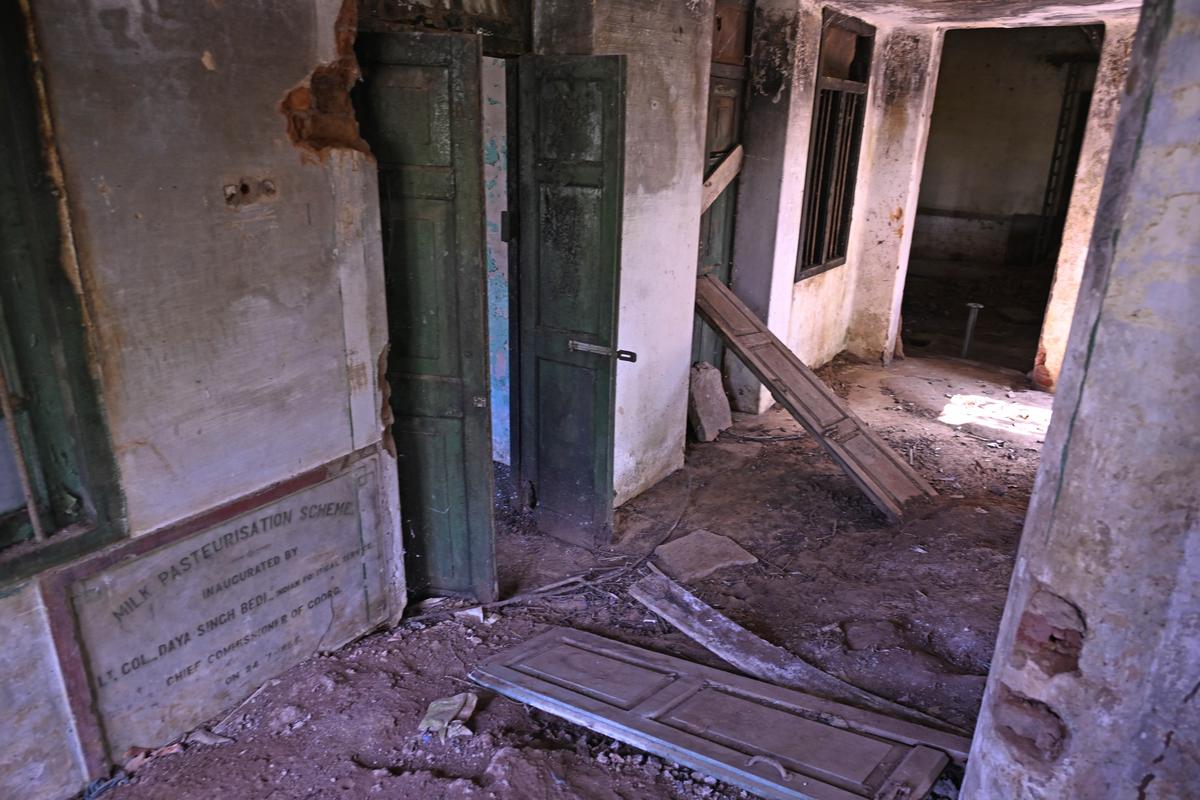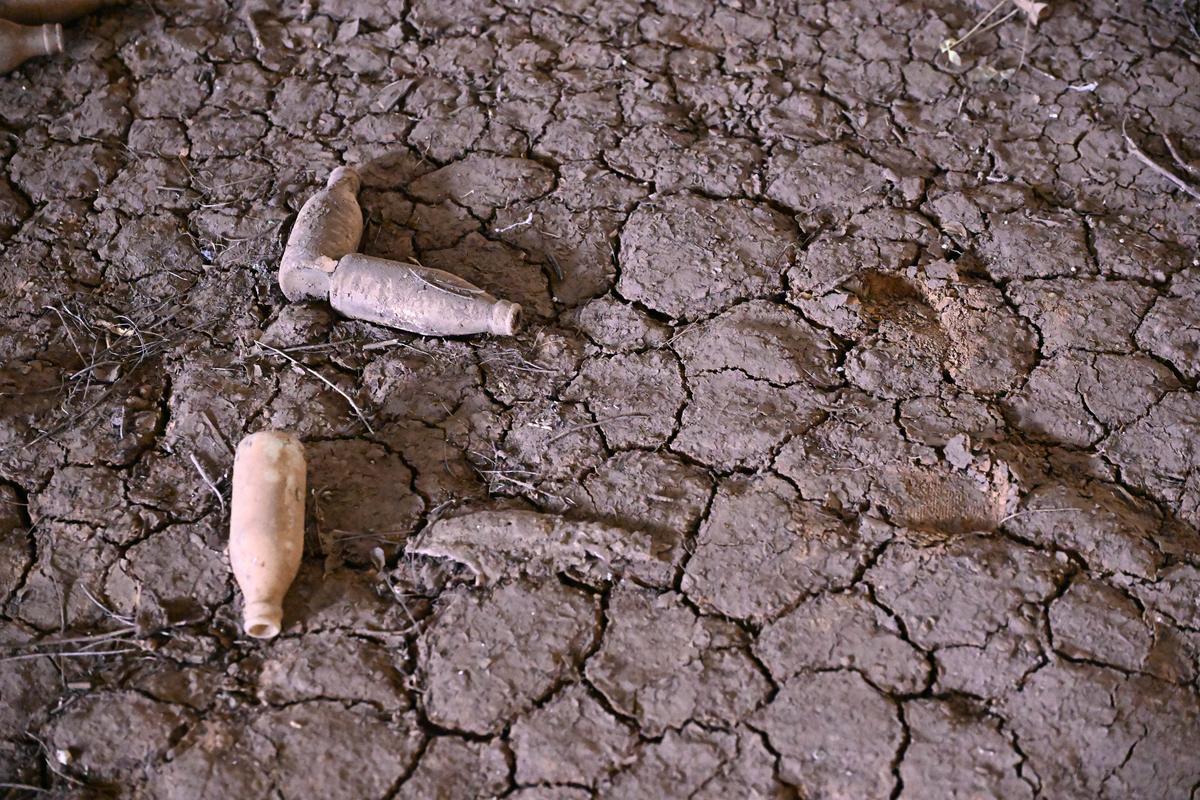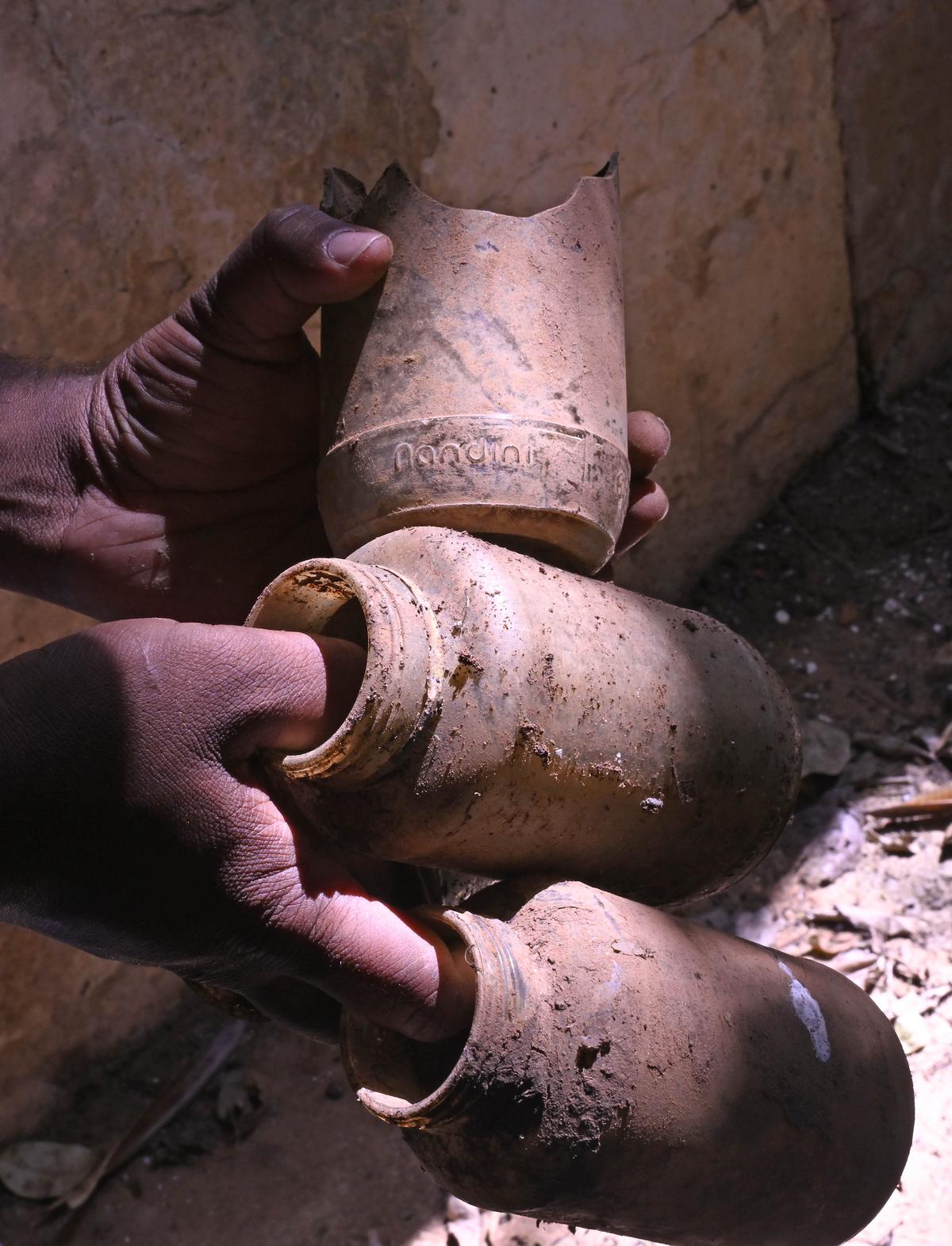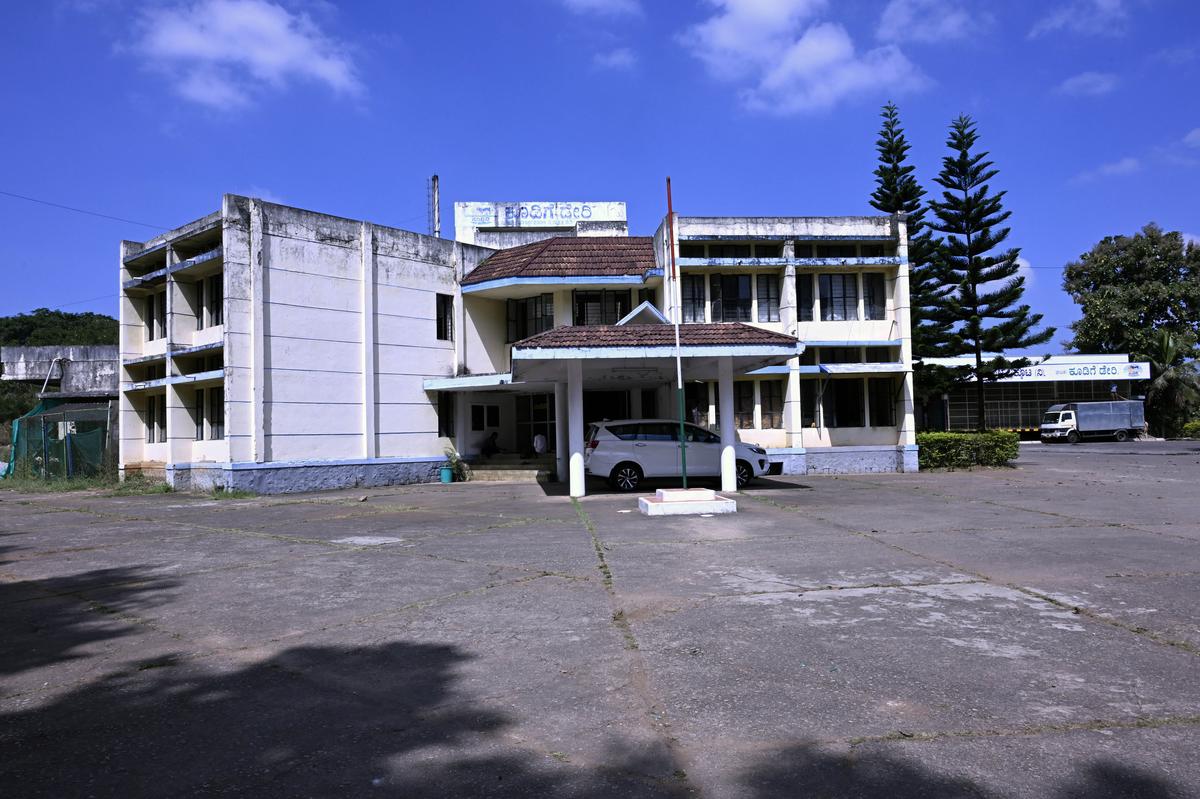In the quiet town of Kudige in Kodagu, an old dairy facility stands as a reminder of the humble beginnings of what would become one of India’s most iconic dairy brands, Karnataka Milk Federation’s (KMF) Nandini. Once a bustling cooperative hub where fresh milk was collected from local farmers, the site now lies in decay, with weathered walls, rusting equipment, empty crates, and broken foundation stones.
This reporter visited Kudige, the birthplace of Karnataka’s first dairy cooperative, long before the rise of the Nandini as a brand, and found that while the original building was in a dilapidated state, a modern, fully operational dairy facility now thrives 500 metres away.
Global recognition
Karnataka’s Nandini milk brand has grown into a globally recognised name, engaged in a range of activities from sponsoring Scotland and Ireland’s cricket teams during the ICC Men’s T20 World Cup last year to constantly launching new products to diversify its business. It has been exploring new markets across the country, competing with Amul, India’s largest dairy producer. However, the roots of this success story trace back to a modest beginning in Kudige back in 1955. The story of this humble origin has largely remained obscured.
Malavika, a long-time resident of Kudige, explained the historical significance of the site, guiding this reporter through the derelict structure. “I have been working here in the Animal Husbandry Department for the past 20 years. My father also worked in this dairy. Now that operations have shifted to the new building, the old one has fallen into disrepair,” she explained.
Inside the old dairy building, the inauguration plaque remains surprisingly intact. It bears the inscription, “Milk Pasteurisation Scheme inaugurated by Lieutenant-Colonel Daya Singh Bedi, then Chief Commissioner of Coorg, on 24 July 1955.”
Malavika guided us through the premises, showing an old weighing machine, various dairy processing machinery, and even glass bottles that were once used to distribute milk. “From this dairy, milk was supplied to different parts of Kodagu, which was then a separate state called Coorg. My father often spoke about how local farmers would bring their milk here, which was then processed and distributed,” she recalled.
Despite its historical importance, the old dairy building at Kudige in Kodagu has been left in a neglected state.
| Photo Credit:
K. BHAGYA PRAKASH
Landmark neglected
Despite its historical importance, the old dairy building has been left in a neglected state. The site, currently under the control of the Hassan Cooperative Milk Producers Union (a part of KMF), has not received adequate maintenance. Local residents have raised concerns about its deteriorating condition.
Rudrappa K., a local farmer, expressed his disappointment. “The government should recognise the importance of this building and convert it into a museum or heritage site to showcase how the milk cooperative movement led to the creation of a successful brand like Nandini. Right now, the structure is in terrible condition. People throw garbage inside, and some even trespass into the premises. The authorities, either the government or KMF, should step in and restore this building,” he urged.
The transformation
Speaking to The Hindu, A.S. Premnath, former Managing Director of KMF, highlighted the historical significance of Kudige in Karnataka’s dairy industry.
“Not many people know that KMF had its origins in Kudige. The first dairy cooperative was established here in 1955. KMF itself was founded in 1974 as the Karnataka Dairy Development Corporation (KDDC) under a World Bank-funded project. It was later renamed Karnataka Milk Federation in 1984,” he explained.
KMF currently operates 15 milk unions across Karnataka, sourcing milk from Primary Dairy Cooperative Societies and distributing it to urban and rural consumers. The federation has approximately 28 lakh dairy farmer members across the State.
As Premnath points out, Kodagu is traditionally known for commercial crops like coffee, oranges, and cardamom, but not for dairy farming. This is probably why not many remember that it was also home to Karnataka’s first commissioned dairy plant. “The Kudige dairy was established in 1955. Later, in 1974, an integrated project was launched to restructure the State’s dairy industry on cooperative principles, laying the foundation for a new era of dairy development. With World Bank assistance, a dairy development project was initiated in 1975, initially covering Mysuru, Hassan, Tumakuru, and Bengaluru districts,” he said.
Premnath, who worked at KMF for nearly 40 years, was himself born and raised in Kudige. His father also worked at the dairy. “I have seen the journey of this Kudige from my childhood. The growth of KMF and Nandini is an incredible success story that started in this small village. I still remember how ghee was produced using firewood to boil the milk. ‘Coorg Ghee’ was a sought-after product back then, just like Coorg Coffee and Coorg Honey,” he reminisced.

The inauguration plaque that still remains intact. It bears the inscription, “Milk Pasteurisation Scheme inaugurated by Lieutenant-Colonel Daya Singh Bedi, then Chief Commissioner of Coorg, on 24 July 1955.”
| Photo Credit:
K. BHAGYA PRAKASH
Growth and expansion
In 2024, KMF recorded a 14% increase in milk procurement and a 10% rise in sales of milk and dairy products. As it continues to compete with other milk brands in South and West India, KMF has also expanded its presence in Delhi to further extend its footprint.
Of the nearly one crore litres of milk procured daily, KMF sells around 65 lakh litres as liquid milk, including UHT Goodlife and curd. About eight lakh litres are converted into milk powder for the Ksheera Bhagya scheme, which supplies milk to schoolchildren, while six lakh litres are used for producing milk-based products like ice creams and sweets.
KMF Chairman Bheema Naik spoke about the cooperative’s structure and its impact. “The Amul model of dairy cooperatives was introduced in Karnataka in 1974-75 with financial support from the World Bank, as well as Operation Flood II and III. The three-tier Anand Pattern structure — village-level dairy cooperative societies, district-level milk unions, and the state-level federation —ensures sustainable dairy farming. KMF is among the few cooperatives that have successfully transformed dairying from a secondary occupation into a full-fledged industry,” he said.

Milk bottles still found at the old dairy facility at Kudige in Kodagu.
| Photo Credit:
K. BHAGYA PRAKASH
Political controversies
Despite its cooperative structure, KMF has every now and then found itself entangled in the ups and downs of Karnataka’s politics, particularly during elections and milk price revisions. Ahead of the 2023 Karnataka State Legislative Assembly elections, a controversy erupted when the then-ruling BJP government allowed Amul to sell its products in Karnataka. This sparked allegations that Union Home and Cooperation Minister Amit Shah was attempting to merge KMF’s Nandini brand with Amul.
The move triggered widespread protests across Karnataka, with slogans like #SaveNandini and #GoBackAmul trending on social media. Protestors took to the streets, fearing that Nandini’s identity and autonomy were under threat. However, despite these challenges, Nandini remains a strong, homegrown brand that has significantly shaped Karnataka’s and India’s dairy industry, experts in the sector say.
The love for Nandini in Karnataka transcends business, holding deep cultural significance. Kannada cinema legend Dr. Rajkumar served as Nandini’s brand ambassador, free of charge, and even featured in the brand’s first and only television commercial in 1996. His son, Puneeth Rajkumar, later continued the legacy, signing an agreement with KMF in December 2009, again without any fee.
From a small village in Kodagu, Nandini has grown to become the second-largest milk cooperative federation in India. Reflecting on this remarkable journey, Premnath attributed KMF’s success to unwavering consumer loyalty, and the dedication of lakhs of farmers. “The strength of Nandini lies in its cooperative spirit and consumer trust. The farmers who contribute to KMF have made it what it is today,” he said.

Milk bottles still found at the old dairy facility at Kudige in Kodagu.
| Photo Credit:
K. BHAGYA PRAKASH
Challenges mount too
While the dairy brand has seen remarkable success, challenges persist as milk unions urge the State government to increase retail prices to ensure better remuneration to the dairy farmers. The farmers have been demanding a hike in incentives, even as KMF faces a glut in milk production.
In June last year, the KMF raised milk prices by ₹2 per litre and added 50 ml to every 500 ml packet. However, KMF officials argue that this increment is insufficient. The federation is facing mounting financial losses from an unsold stockpile of skimmed milk powder (SMP), adding to the strain on the dairy sector.
Amid this surplus, many of Karnataka’s 15 milk unions have reduced procurement prices by ₹2 per litre, triggering discontent among farmers. Currently, most unions pay ₹32.5 per litre to farmers, but in districts such as Kolar, Mandya, and Ballari, the rate has dropped to ₹30. Dairy farmers are also frustrated that the government’s ₹5 per litre incentive, introduced under the Ksheeradhaare scheme, has remained unchanged for over a decade despite increasing production costs.
The Ksheeradhaare scheme was launched in 2008 with a ₹2 per litre incentive, which was later increased to ₹4 per litre in 2013 and ₹5 per litre in 2016. However, since then, there has been no further revision, even as expenses for feed and maintenance have risen significantly. Adding to their woes, the State government has not disbursed these incentives for more than 10 months, leaving farmers struggling financially.
Farmers’ leader Kurubur Shanthakumar criticised the government, alleging that apart from withholding incentives, farmers are also being paid ₹1 less per litre for their milk. “There are approximately 38 lakh dairy farmers in Karnataka, and over 90% of them are women. The government speaks about women’s empowerment, yet it fails to ensure timely payment of their incentives,” he said. He further emphasised that the success of the Nandini brand is due to the efforts of farmers, and therefore, they deserve to be adequately compensated.

The new building of Karnataka Milk Federation at Kudige in Kodagu.
| Photo Credit:
K. BHAGYA PRAKASH
Consumers chose brand name ‘Nandini’
Interestingly, the name ‘Nandini’ was not chosen by officials at the Karnataka Milk Federation (KMF) but was suggested by the consumers who would go on to support and cherish the brand. According to A.S. Premnath, former Managing Director of KMF, in 1983, KMF decided to introduce a corporate brand identity for its milk and dairy products to strengthen its presence in the market. As part of this initiative, it reached out to consumers, inviting them to suggest a name for the brand. “The response was overwhelming, with a large number of consumers recommending the name ‘Nandini.’ Given the strong public preference for this name, KMF officially adopted ‘Nandini’ as the brand name for its dairy products,” Premnath said.
Published – February 07, 2025 06:10 am IST










